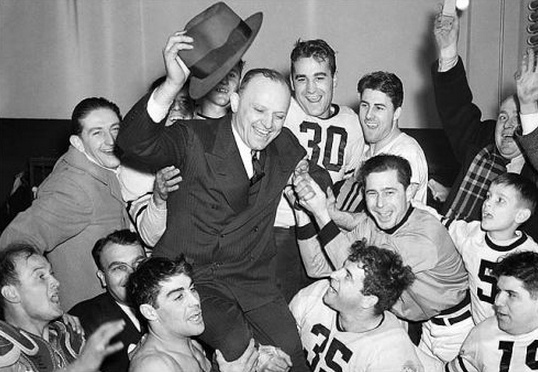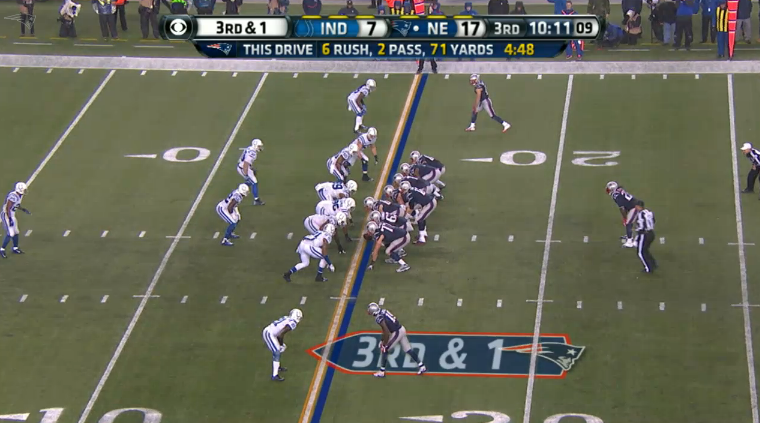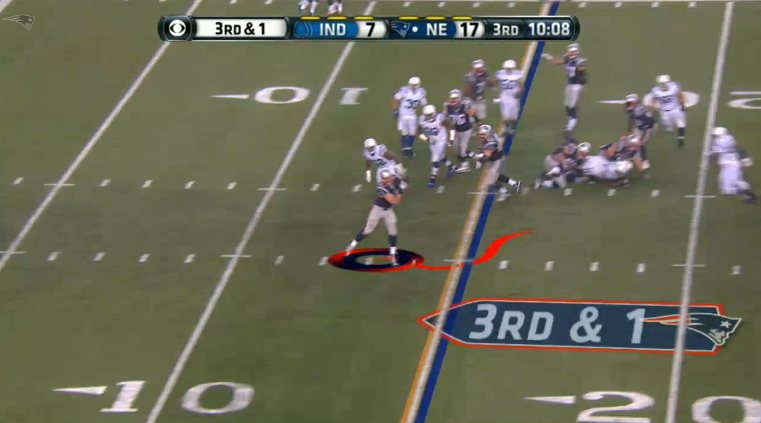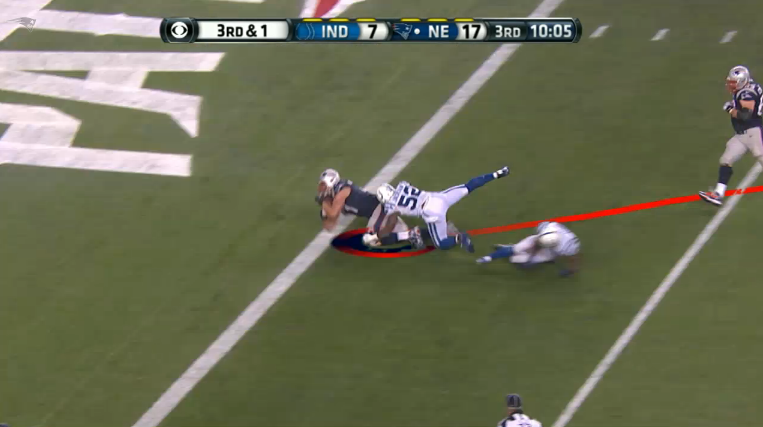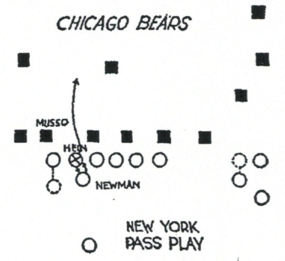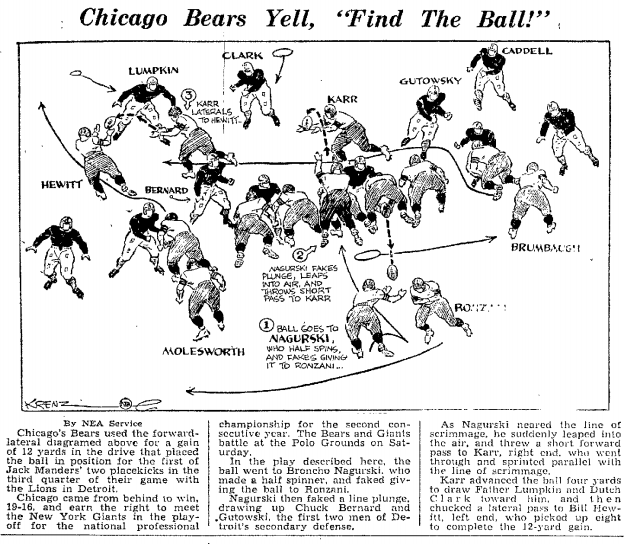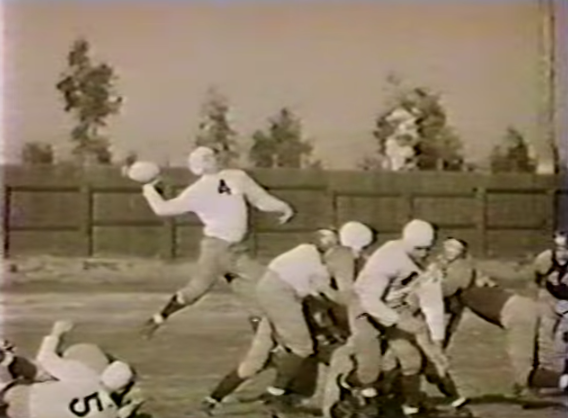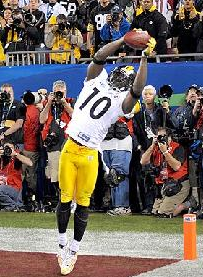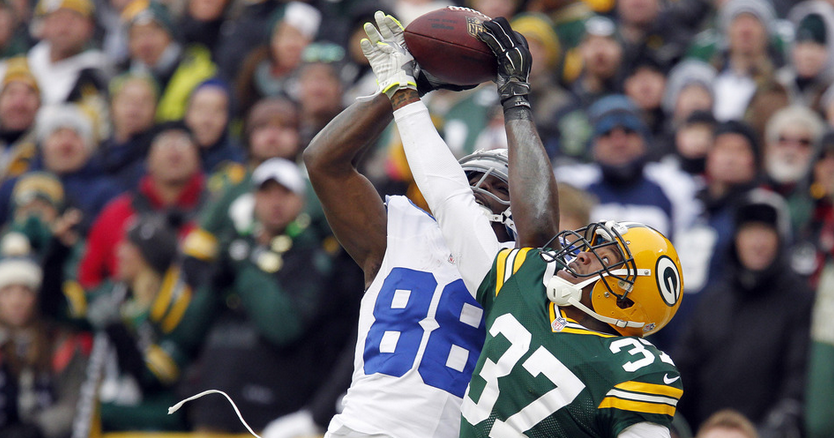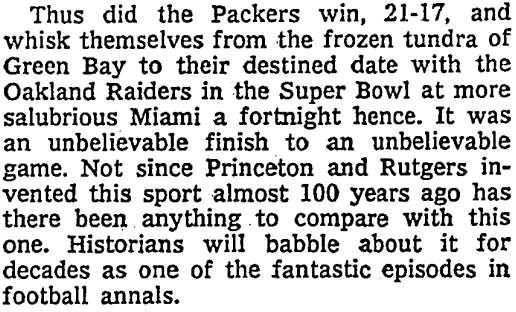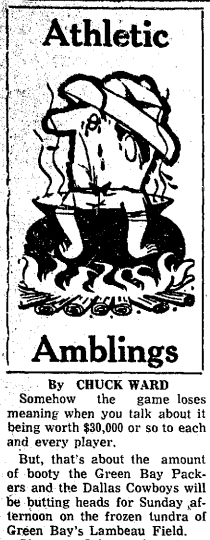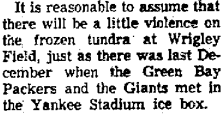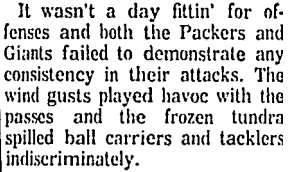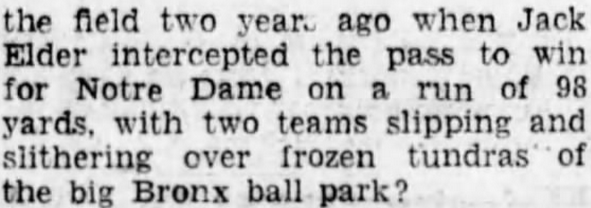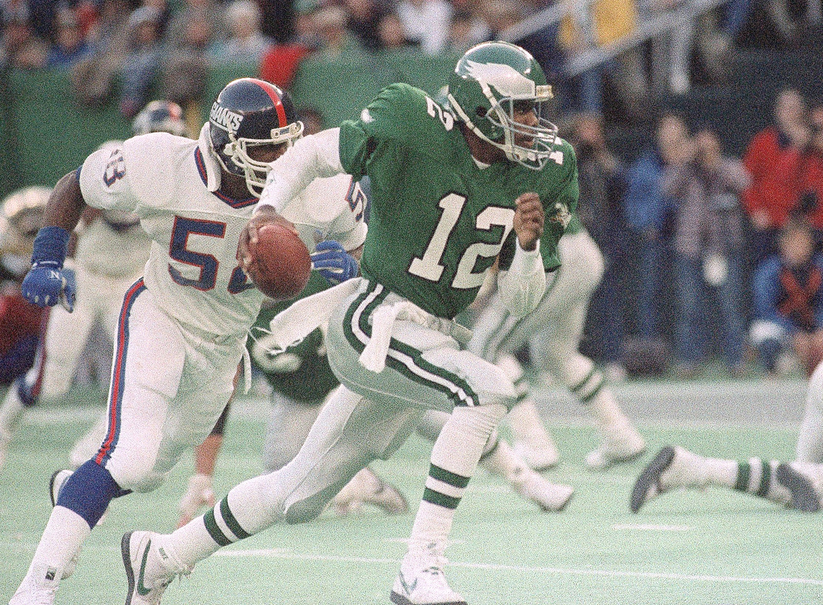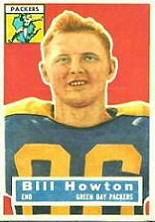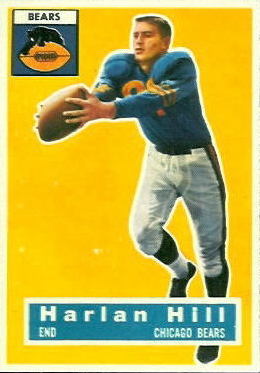One of the many questions I was dying to ask Lions great Glenn Presnell when I interviewed him decades ago was this: How was your 1936 Detroit team able to run the ball better than anybody else in pro football history?
This is no exaggeration. The Lions that year had three of the top six rushers in the league: Ace Gutowsky, Dutch Clark and Ernie Caddel. (Presnell, in his final season at 31, was more of a role player.) Working out of the single wing, without much of a passing threat, they rushed for 2,885 yards in 12 games. No club before or since has topped their average of 240.4 yards a game, not even the handful of clubs with two 1,000-yard rushers. (Next best: the O.J. Simpson-fueled 1973 Bills at 220.6.)
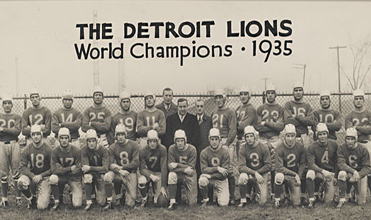 This was no grind-it-out, three-yards-and-a-glob-of-mud attack, either. The Lions averaged 4.9 yards per attempt, far above the league average of 3.5. So, I asked Presnell, “How did you do it? How did you set a record in 1936 that still stands today?” I shouldn’t have been surprised by his answer, I suppose — being a Veteran Scribe and all — but I was.
This was no grind-it-out, three-yards-and-a-glob-of-mud attack, either. The Lions averaged 4.9 yards per attempt, far above the league average of 3.5. So, I asked Presnell, “How did you do it? How did you set a record in 1936 that still stands today?” I shouldn’t have been surprised by his answer, I suppose — being a Veteran Scribe and all — but I was.
The Lions cheated. That is, their lineman fired out a split second before the ball was snapped.
“When we practiced our signals — hut one, hut two, hut three — the linemen charged on ‘hut’ and the center snapped the ball on ‘two,’ “ he said. “We always hit the defense first. [Coach] Potsy [Clark] expected those guys to explode off their marks on ‘hut.’ And of course, the center would be hanging on to the ball a split-second longer, but not enough for you to be called offside. I always attributed our good blocking to that. In fact, I coached that myself.”
With only four officials monitoring things, you could get away with plenty in the 1930s. With seven sets of eyeballs now — and TV cameras also helping to root out illegal activity — there are fewer dark corners of the field. Still, on most plays, if not all, you could probably find some act that didn’t conform to the letter of the law . . . and didn’t get penalized. A motion man ever so slightly angling himself toward the line of scrimmage. A defensive back bumping his man more than 5 yards downfield. A receiver pushing off or setting a pick. A D-lineman inching into the neutral zone. A blocker grabbing a pass rusher’s jersey. A center subtly moving the ball forward before the snap.
There are so many players milling about, so much mayhem and general mob behavior, that enforcement can seem almost arbitrary — like speeding tickets on the interstate. What we’re talking about here is a Culture of Cheating, a whatever-you-can-get-away-with mentality that’s as much a part of the game as the huddle and the touchdown celebration.
That’s why it’s hard to get worked up over what The Hysterics have dubbed Deflategate: the discovery that some of the footballs the Patriots’ Tom Brady threw in the AFC title game weren’t inflated to specifications. Sorry, but given all the stuff that goes on in every game, a pound of air pressure — or whatever it was — doesn’t seem like that big a deal. Certainly not as big as, say, the ’36 Lions’ offensive line beating the snap on every single offensive play. (I forgot to mention: They won the ’35 title playing that way, too.)
Maybe I’ve just seen and heard too much. Maybe if I were younger — and more naïve — I’d feel differently. But to me, all this huffing and puffing about Deflategate is just a bunch of hot air, something to fill the void during Pro Bowl week. Or to put it another way: If you really think this air-pressure story is stop-the-presses material, then you and I can’t possibly be watching the same game.
Here’s a column I wrote about cheating in 2007, not long after the Patriots were caught taping the signals of opponents (for which they and coach Bill Belichick were fined and stripped of a first-round draft pick).
You’ll find some interesting names in it — famous names. You might even come away feeling differently about this latest “crisis,” the one involving footballs, air pressure and Big Bad Patriots.
When George Allen was coaching the Redskins in the ’70s, there was nothing he wouldn’t do to win — trade the same draft pick twice, have his defense jam the opposing quarterback’s signals (also a no-no), grease his offensive linemen’s jerseys so they’d be harder to grab. (Or was that Al Davis?) The Cowboys’ Tom Landry was always accusing him of some kind of subterfuge or other. It’s doubtful George ever felt a twinge of regret.
Whenever the Cleveland Browns visited Wrigley Field in the old days, Paul Brown would give his team pre-game instructions in virtual pantomime. The legendary coach was utterly convinced that George Halas was bugging the visitors’ locker room. If an outsider had walked in on this scene, Cleveland Hall of Famer Mike McCormack said years later, he would have thought Brown “was coaching the State School for the Deaf.”
Not that PB was any angel. One of his favorite methods of gathering enemy intelligence was to send an underling to an opponent’s practice field posing as a newspaper reporter. No telling what useful scraps of information he might be able to pick up — particularly if the media were allowed to watch workouts. Maybe a club was working on a new formation. Maybe a star player was hurt more seriously than the coach was letting on.
There’s also the story, perhaps apocryphal, of a Cleveland scout being put through a course in climbing telephone poles — after which, equipped with spiked shoes, binoculars and a notebook, he headed off on a series of surveillance missions. The Browns won an awful lot of games back then, so presumably their spy did his job well.
Such espionage has been going on in football since Alonzo Stagg was in knickers. It’s the gridiron version of the Cold War. As Kathleen Turner told William Hurt in Body Heat, “Knowledge is power.” (Actually, the entire line was: “My mother told me knowledge is power” — leaving open the possibility her mother was a Halas.)
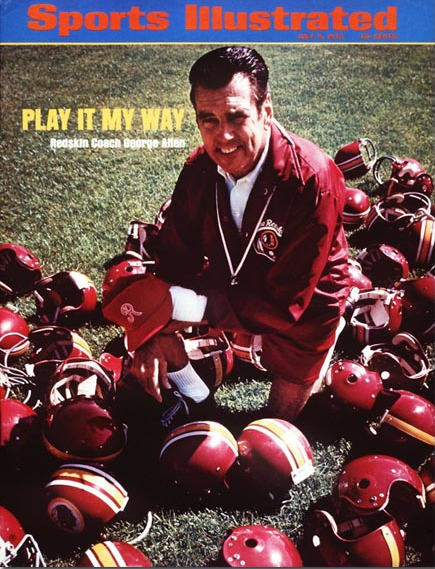
George Allen usually did play it “his way.”
So there’s a dog-bites-man quality to the breathless news that the Patriots got caught videotaping the signals of the Jets’ defensive coaches Sunday. Indeed, it’s the brazenness of the act more than the act itself that astounds. Especially because, according to reports, it wasn’t the first time the Pats had done it.
It’s also, let’s face it, an incredibly tacky thing to do — kind of like a billionaire cheating on his taxes. A team that’s won three championships in this decade — and may win a couple more before it’s done — pulling a stunt like this? To think New England had an image as a classy organization.
Still, as crimes and misdemeanors go, I don’t consider “illegal videotaping” as reprehensible as, say, circumventing the salary cap, which several clubs (but not the Patriots) have been penalized for. Inasmuch as the Pats’ camera was confiscated in the first quarter, their skullduggery certainly didn’t have anything to do with their whomping of the Jets. But it might have been a factor, I suppose, in their next whomping of the Jets.
Two things should be pointed out here. First, the Jets hijacked the Patriots’ top defensive assistant last year, Eric Mangini, who no doubt brought a lot of inside knowledge about New England’s operation. This isn’t against the rules, but it’s hardly the norm for a club to fill its head coaching vacancy by raiding the staff of its division archrival.
Then there’s Bill Belichick’s background — or rather, his military mentality. Belichick grew up in Annapolis, and his father Steve was a longtime scout for the Naval Academy. So much of Bill’s secretive, often quirky behavior, I’m convinced, can be traced to that. Probably the only reason he had somebody videotaping the Jets’ coaches was because he figured an observation balloon wouldn’t have had a good enough angle.
Belichick is one of those by-all-means-necessary types — like George Allen and Genghis Khan. He’ll try to beat you any way he can, rules or no rules. It’s one of the reasons his players appreciate him; he never pulls a punch. (And if he wants to rub it in a little by summoning 99-year-old Vinny Testaverde from the bench to throw a touchdown pass for the 20th consecutive season, he’ll do that, too.)
Getting back to Allen . . . . When he was coaching the Redskins in the ’70s, there was nothing he wouldn’t do to win — trade the same draft pick twice, have his defense jam the opposing quarterback’s signals (also a no-no), grease his offensive linemen’s jerseys so they’d be harder to grab. (Or was that Al Davis?) The Cowboys’ Tom Landry was always accusing him of some kind of subterfuge or other.
It’s doubtful George ever felt a twinge of regret. He just wasn’t wired that way. And it’s doubtful Belichick will lose much sleep over whatever sentence Roger Goodell metes out. Besides, it’s easy to rationalize such behavior in the kill-or-be-killed culture of the NFL. Allen might have had some Richard Nixon in him, but don’t forget, he would remind sportswriters, “The Cowboys had a dog run into our huddle one day in the Cotton Bowl when we were driving for the winning points.”
From The Washington Times, Sept. 13, 2007
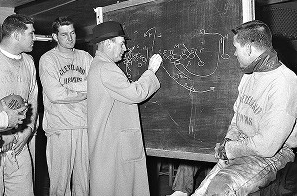
At Wrigley Field, Browns coach Paul Brown would pantomime his pregame talk, fearful the room was bugged.

